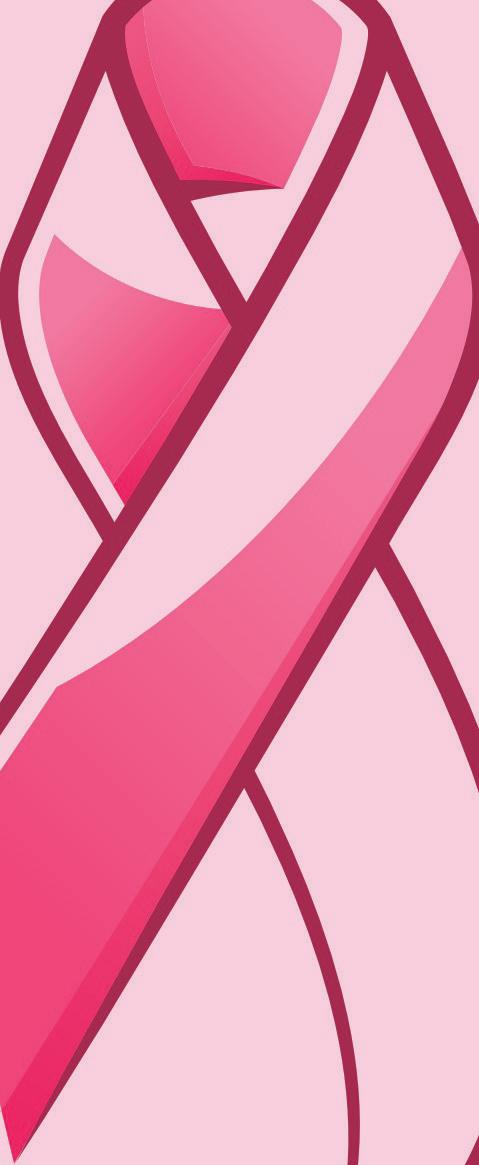Breast Cancer FAQ




The World Health Organization reports that roughly 2.3 million women were diagnosed with breast cancer in 2020. By the end of that year, there were nearly eight million women alive who had been diagnosed with the disease in the previous half decade.



A breast cancer diagnosis inevitably leads to questions about the disease. The bulk of those questions undoubtedly are asked by the millions of women who are diagnosed with breast cancer. But millions more individuals, including friends and family members of recently diagnosed women, may have their own questions. Women can discuss the specifics of their diagnosis with their physicians. In the meantime, the following are some frequently asked questions and answers that can help anyone better understand this potentially deadly disease.
WHAT IS BREAST CANCER?

Cancer is a disease marked by the abnormal growth of cells that invade healthy cells in the body. Breast cancer is a form of the disease that begins in the cells of the breast. The National Breast Cancer Foundation notes that the cancer can then invade surrounding tissues or spread to other areas of the body.
CAN EXERCISE HELP TO REDUCE MY BREAST CANCER RISK?
The NBCF notes that exercise strengthens the immune system and women who commit to as little as three hours of physical activity per week can begin to reduce their risk for breast cancer. However, even routine exercise does not completely eliminate a woman’s risk of developing breast cancer.
IS THERE A LINK BETWEEN DIET AND BREAST CANCER?
The organization Susan G. Komen®, a nonprofit source of funding for the fight against breast cancer, reports that studies have shown eating fruits and vegetables may be linked to a lower risk for breast cancer, while consuming alcohol is linked to an increased risk for the disease. In addition, the NBCF reports that a high-fat diet increases breast cancer risk because fat triggers estrogen production that can fuel tumor growth.
IS THERE A LINK BETWEEN ORAL CONTRACEPTIVES AND BREAST CANCER?
The NBCF reports that women who have been using birth control pills for more than five years are at an increased risk of developing breast cancer. However, the organization notes that risk is very small because
Did you know?
Breast cancer affects millions of women each year, but breast cancer also can be diagnosed in men. Each year in the United States, about 2,400 cases of breast cancer are diagnosed in men, according to the Centers for Disease Control and Prevention. Roughly 270 men will be diagnosed with breast cancer this year in Canada, according to the Canadian Cancer Society. Macmillan Cancer Support says men have a small amount of breast tissue behind their nipples, where breast cancer potentially can develop. Breast tissue in boys and girls is the same until puberty, when girls start to develop more. Signs of male breast cancer include a lump or swelling in the breast, redness or flaky skin in the breast, irritation or dimpling of the skin around the nipple, nipple discharge, or pulling in or pain of the nipple, states the CDC.
TF23A356
modern birth control pills contain low amounts of hormones.
CAN BREASTFEEDING REDUCE BREAST CANCER RISK?
Breastfeeding and breast cancer are linked, though the NBCF notes that the role breastfeeding plays in lowering cancer risk depends on how long a woman breastfeeds. The World Cancer Research Fund International notes that evidence indicates that the greater number of months women continue breastfeeding, the greater the protection they have against breast cancer.
IS THERE A CONNECTION BETWEEN STRESS AND BREAST CANCER?
The NBCF notes that researchers have found that traumatic events and losses can alter how the immune system functions, which can provide an opportunity for cancer cells to establish themselves within a person’s body. The NBCF urges women to identify ways to keep their stress levels in check.
Breast cancer education can be a valuable asset as women seek to reduce their risk for the disease.
TF23A355What breast cancer can do to the body
No woman wants to be diagnosed with breast cancer. A potentially fatal disease, breast cancer affects millions of women across the globe each year. Thankfully, survival rates for the disease have improved considerably in recent decades, and women now have a much greater chance of living for many years after successful treatment. A 2017 study from the American Cancer Society found that the number of women who died from breast cancer dropped by about 40 percent in the quarter century preceding the study. A host of variables, including advancements in detecting and treating the disease and a heightened awareness of the need for screening, have contributed to that positive turn. Though breast cancer treatment is highly effective, particularly when the disease is in its early stages at the time of an initial diagnosis, women may still experience some side effects of both the disease and the treatment their cancer care teams design. The following are some ways that breast cancer and treatment can affect a woman’s body in both the short- and long-term.
• Joint and muscle pain: According to Susan G. Komen®, a nonprofit organization that helps to fund breast can-

cer research, aromatase inhibitors are hormone therapy drugs used to treat hormone receptor-positive breast cancer. Researchers have found that joint pain and muscle pain are common side effects of aromatase inhibitors. This pain might be most noticeable after sleeping or a period of inactivity. Fortunately, the damage to joints and muscles is not permanent.
• Fatigue: Breastcancer.org reports that breast cancer causes changes in



the body that can lead to fatigue. That fatigue could be linked to cytokines, which are proteins released by certain breast cancers that researchers suspect cause fatigue. Breast cancer also can alter hormone levels in the body and cause inflammation, and each of those effects can contribute to fatigue.

• Skin changes: The MD AndersonCancer Center reports that certain changes to the skin are hallmarks of inflammatory breast cancer, a rela-


tively rare yet aggressive form of the disease. Redness or another change in the skin color of the breast, swelling on one side and/or a rash that appears suddenly are changes in the skin that can appear due to breast cancer. Dimpling of the skin over the breast is another change in the skin that can result from breast cancer.

• Libido and fertility: Breastcancer. org reports that some breast cancer treatments can lower a woman’s libido, which is her desire for sex and intimacy. This side effect is possibly a byproduct of other effects of treatment that can affect a woman’s mental state, including anxiety, depression, weight changes, fatigue, and difficulty sleeping. In addition, the National Cancer Institute notes that certain types of chemotherapy can cause infertility. Though the Centers for Disease Control and Prevention reports that most cases of breast cancer are diagnosed in women over 50, women can still get the disease at any age. Women who hope to have children after a breast cancer diagnosis are urged to discuss that goal with their cancer care teams so their course of treatment does not adversely affect their ability to give birth.
TF23A358
Did you know?







Family history is considered a risk factor for various diseases, and breast cancer is no exception. According to Cancer Research UK, having a first degree relative, which includes a mother, sister or daughter, diagnosed with breast cancer approximately doubles a woman’s risk for breast cancer. However, the American Cancer Society notes that only about 5 to 10 percent of breast cancer cases are thought to be hereditary. Hereditary cases of breast cancer are those that result directly from gene mutations passed on from a parent. The relatively small percentage of hereditary cases is important to note, as it means that the vast majority of women who are diagnosed with the disease have no family history of breast cancer. TF23A360






























Groups at elevated risk for breast cancer



The number of women diagnosed with breast cancer in 2020 exceeded two million. That figure, courtesy of the World Health Organization, underscores the significance of the threat posed by the disease.






Though no one is immune to breast cancer, researchers have concluded that certain groups have a higher risk of developing the disease than others. Women who recognize their personal risk for breast cancer may not be able to change certain factors that increase their chances of developing the disease. However, recognition of their personal risk could put women in position to lower that risk in other ways. According to the WHO, the following are some groups who are at elevated risk of developing breast cancer.

• Women: Johns Hopkins Medicine reports that less than 1 percent of all breast cancer cases occur in men. Though it’s still important for men to recognize they’re not immune to the disease, women must also recognize that nearly all of the more than two million annual breast cancer diagnoses across the globe are found in women.







• Women 50 and older: The Centers for Disease Control and Prevention reports that most breast cancers are found in women who are 50 years old or older. A report from the Na-




tional Cancer Institute indicates that a 30-year-old woman has a 1 in 204 chance (0.49 percent) of being diagnosed with breast cancer, while a 40-year-old has a 1 in 65 chance (1.55 percent) of being diagnosed. By the time women reach age 60, their risk is 1 in 28 (3.54 percent), while a 70-year-old has a 1 in 24 chance (4.09 percent) of being diagnosed.
Though women of any age can get the disease, the risk clearly increases as women get older.

• Women who meet the criteria for being overweight or obese: The nonprofit organization Susan G. Komen®, which helps to raise funds for the fight against breast cancer, notes that women who are overweight or obese after menopause








No matter what the statistics say,
have a 20 to 60 percent higher risk of developing breast cancer than women who are not overweight or obese. The American Cancer Society reports that having more fat tissue increases breast cancer risk because it raises estrogen levels. However, the ACS notes the link between weight and breast cancer risk is complicated, so it’s worth it for women concerned about their cancer risk to open a dialogue with their physicians.
• Women who consume alcohol: The MD Anderson Cancer Center reports that alcohol consumption and breast cancer risk are linked. Though the precise cause of the link is unknown, one theory suggests that consuming alcohol can increase estrogen levels as well as the levels of other hormones associated with breast cancer. However, the MDACC warns that the risk is very low, particularly for women who limit their consumption to one drink or less per day. Routinely consuming more than one alcoholic drink per day is a cause for concern.
It’s vital that women recognize their risk for breast cancer. Though any woman can be diagnosed with breast cancer, certain factors, including some that can be avoided, can increase a woman’s risk for the disease.

 TF23A357
TF23A357
